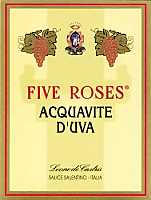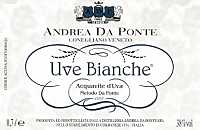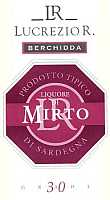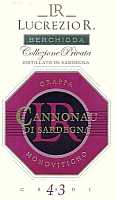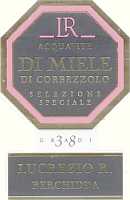|
Basil was known since the times of Egyptians, who used it, together with other
essences, during religious ceremonies. It seems it was also used as an
ingredient for the preparation of the balms used for mummification. In the
Middle Age, it was believed to have magic properties, it was used as a defense
against “basilisk”, a monster which looked like a poisonous serpent. The
origins of Basil are from India and Indonesia. It was probably introduced in
Europe by Greeks and Romans, coming from the commercial routes which crossed the
Middle East. Ancient Romans considered it the symbol of lovers, and it was also
used as an aromatic herb in cooking. Apicius mentioned basil in a recipe with
peas. In England was introduced around the sixteenth century, whereas in America
will be introduced in the seventeenth century.
|
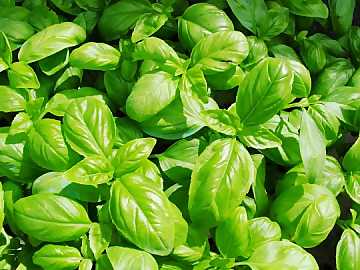 | |
| Green, fresh and aromatic: basil adds to
recipes its unmistakable sign | |
|
In its homeland - India - the use of basil in cooking is pretty limited. A type
of basil - Ocimum Sanctum - the famous “Tulsi” - is considered a sacred
plant dedicated to Vishnu and Krishna, its seeds are used for the
making of mala, and are being consumed by the ones who practice a
vegetarian diet or want a more sound lifestyle. In ayurvedics, the traditional
Indian medicine, basil is used as a remedy for many diseases. In India is pretty
common to plant basil in order to check the salubrity of a soil: the good
growing of the plant makes a place or soil good. Moreover, it is believed the
presence of basil, or better to say, Tulsi, can keep evil spirits away while
attracting divine blessings. The leaves are used during religious ceremonies
dedicated to Vishnu, in particular the ones in favor of family wellness.
In India a plant of basil cultivated in front of the house, keeps unwanted
insects away, although anyone knowing the Indian traditions, will say it is a
sign of the culture and the religious beliefs of the family. The soil
surrounding the plant, is manured with cow's manure, an animal considered sacred
in India. In the most rich houses are being cultivated many plants of tulsi, in
order to make a small sacred garden called tulsi-van or vrindavan.
Sacred Hindu writings suggested to consider tulsi not as a simple plant, but as
a natural representation of the gods Vishnu or Krishna. Whoever had the chance
to travel to India will certainly have noticed many people use a series of small
balls tied with a string (Mala), resembling the chain used by catholics:
the small balls are made from a sacred plant, Indian basil, tulsi's mala. In
order to understand the respect Hindus have for this plant, it is worth
remembering that Englishmen, when they wanted an Indian to swear about something
- and while not having an equivalent to the Bible - they forced Indians to swear
on tulsi.
In the western world basil is the sign of fertility. Boccaccio told the story of
Lisabetta who, after having hidden the head of her lover in the soil of a basil
vase, she watered him with her tears. A different opinion had Van Helmont
(1577-1644), a Flemish doctor, who believed basil left between two bricks made
the plant to get transformed into a scorpion.
Use of Basil
Basil is an annual plant which likes tempered climates and does not stand to
frosts. It can reach a height of 30-40 centimeters (11-15 inches). An
interesting and curious characteristic is that basil, when cultivated in an
adverse environment, tends to lose its main characteristics, it gets oily and
thick, lose its characteristic sweet and delicate aroma while getting harsh and
strong smells. In Genoa, Italy - where Basil is extensively cultivated, in
greenhouses at tropical temperatures and humidity - the harvesting is done
when the plant reaches the height of twelve centimeters (5 inches), in order to
get the best out from the organoleptic characteristics. People from Genoa are
very exacting about basil. In Liguria there is the tradition of cultivating
basil in earthenware vases left in house's balconies. To summarize things up:
the best basil is the one cultivated in a proper environment and consumed young.
The aroma of fresh basil and dried basil cannot be compared. Fresh basil can be
kept for a short time in the refrigerator, however the best way to keep it is
undoubtedly keep the leaves in oil. According to Italian tradition, small leaves
of basil are washed and dried, then are put in a jar and sprinkled with some
salt, then the process is repeated, likewise, with other basil leaves, some
salt, more basil leaves and so on, until the jar is full. When the jar is full,
it is filled with olive oil in order to completely cover the leaves, it is
sealed and kept in a fresh place or in the refrigerator, away from light
sources. By using this method, basil can be kept for a pretty long time without
losing its organoleptic qualities, even though as time passes by, leaves with
tend to get a black color. Moreover, basil kept according this method is ideal
for the preparation of “pesto alla genovese”.
Basil certainly is not a characteristic ingredient of northern European
cooking. It is found in southern countries of Europe, in Italy, in Greece and in
the countries of the Mediterranean. The most fascinating use of basil in cooking
can be probably found in “pesto alla genovese”, which, in different
expressions, is common in every part of the coast from Genoa to beyond the
borders of Italy, in Provence, where it is called pistou. The ingredients
of “pesto” are basil, garlic, salt, olive oil, pecorino cheese and/or
Parmesan cheese, pine kernels or walnuts, finely crushed in a mortar until getting a
thick sauce. It should be noticed some versions of “pesto” do not make
use of garlic. In Italy - where it is now common in every region - it is used as
a condiment for pasta, in particular “trenette”, as well as rice and
canapes. The spreading of basil has led industry to offer consumers jars of
ready to use “pesto”, of course not comparable to fresh pesto, however
it is maybe better to use this kind of pesto instead of not enjoying it at all.
A typical product of Apulia is basil oil. Oil is being naturally aromatized:
during crushing, strictly made with mechanical tools, are also crushed some
basil leaves, which give oil a fresh and intense aroma. Basil oil is used to
season pasta dishes, fish and salads. In southern France pistou is used
for soups. In the Italian riviera, it was common to have a snack with a sort of
bun stuffed with tomato, salt, olive oil and some basil leaves: a tasty snack,
now replaced by other sandwiches. A bun with tomato, oil and basil, is enriched
with the flavors and aromas of the ingredients, always different, essence of the
earth, different in every season and in every region.
The aroma of basil is well matched to tomatoes, and to every dish made with
tomatoes, with eggs dishes, such as omelettes or scrambled eggs, with eggplant,
fish - in particular mullet and lobster - as well as other recipes. Fantasy and
taste, as always, are the limit. In shops can also be found dried basil leaves
used for the preparation of sauces, stews and soups. It is better to add basil
during the last phases of cooking as it tends to easily lose its characteristic
aroma. Some cooks avoid cutting basil leaves with a knife, while preferring to
tear it with hands in order to allow essential oils to give all their best
aromas. Beyond European countries, basil is used in Malaysia (selaseh)
and in India (babuitulsi). There is also basil vinegar, which is prepared
by infusing basil leaves in vinegar.
The use of basil is not limited in cooking or in religious ceremonies only, but
also in cosmetics, herbal medicine and aromatherapy. In herbal medicine is used
as a remedy for bad smelling breath, digestion problems, cough, meteorism,
nervous headache and headache caused by bad digestion. An infusion of dried
leaves is used as a remedy for fever, nausea and abdominal cramps. Basil oil is
not recommended in case of pregnancy, kids younger than six, on pretty delicate
skin. When consumed in high quantities, the essence of basil can have narcotic
effects, when used on the skin it can have an irritating effect. The plant
contains an essential oil rich in estragol and eugenol, as well as linalool and
terpenes. In cosmetics it is used as a tonic and deodorant: it is enough to put
15 leaves of basil in a cotton bag and to add it to the bath. As a tonic for the
skin, can be useful some leaves of basil and sage macerated in alcohol,
subsequently diluted with water. For hair, an infusion of basil used as a lotion
after shampooing. In aromatherapy it is used as a stimulant.
|


